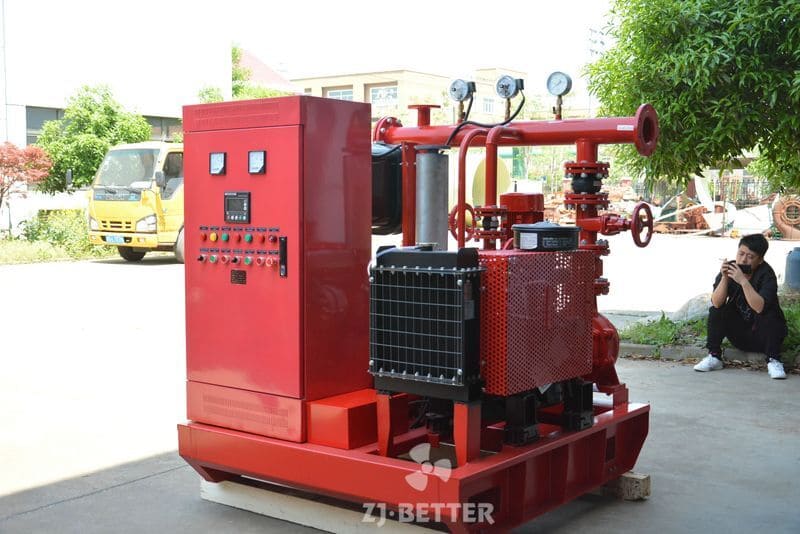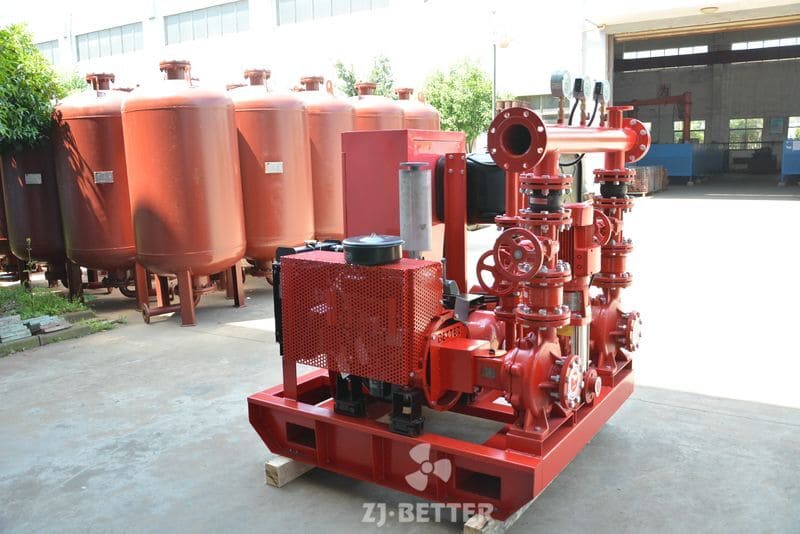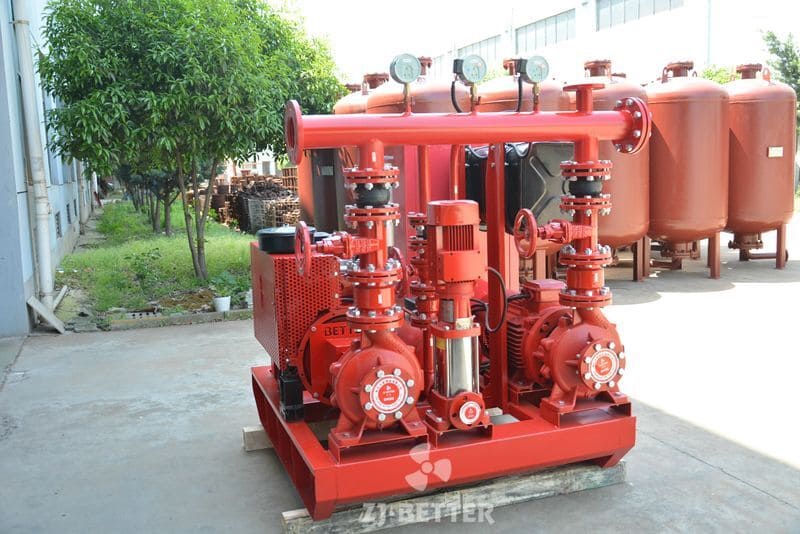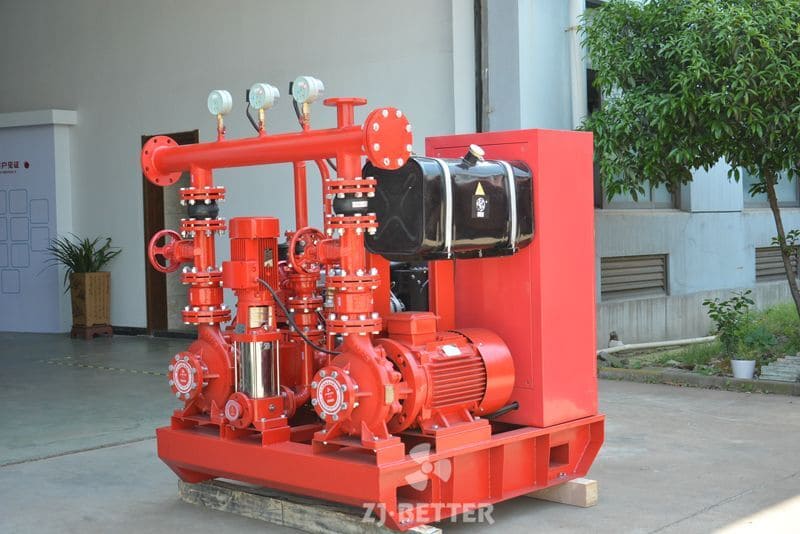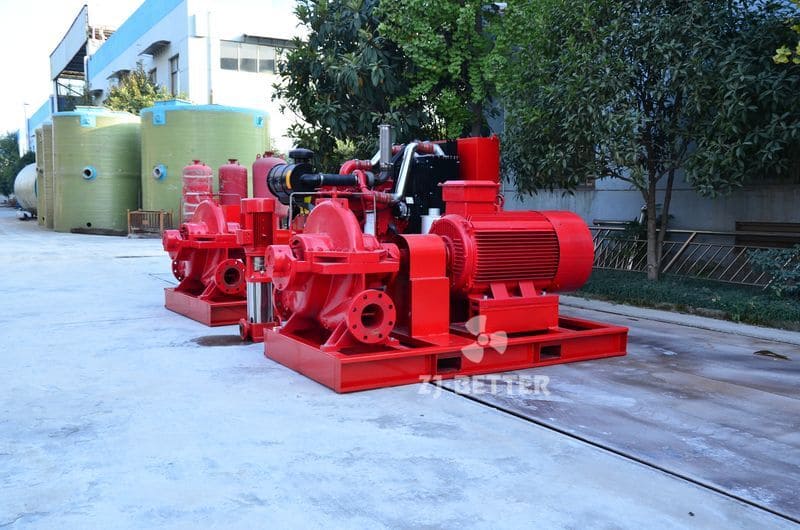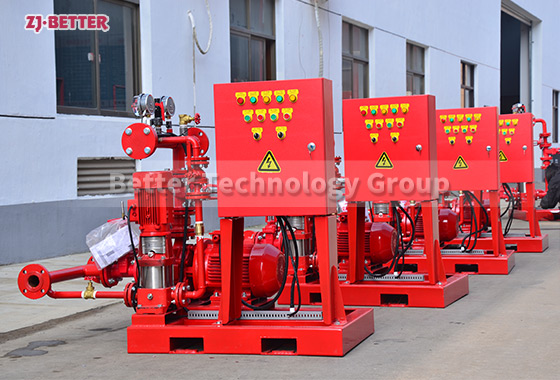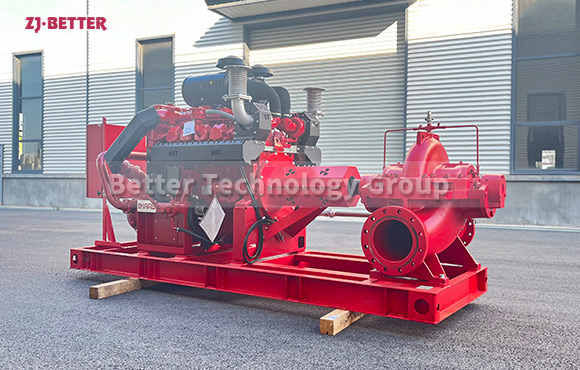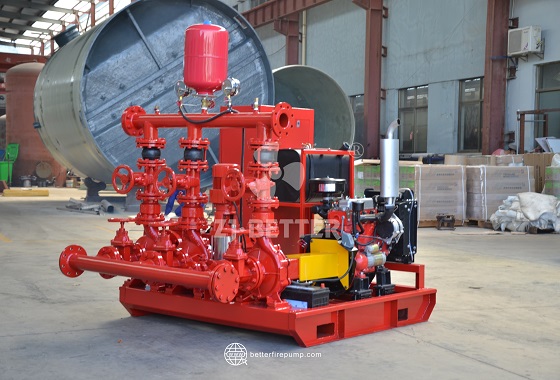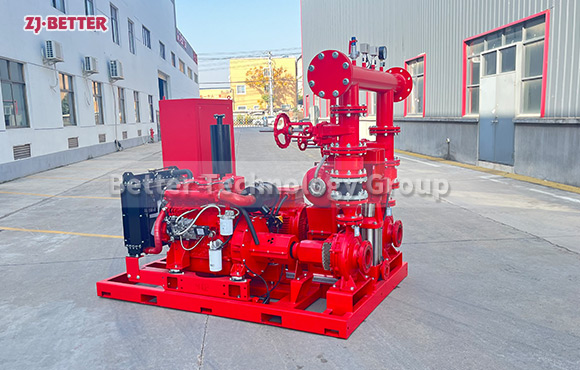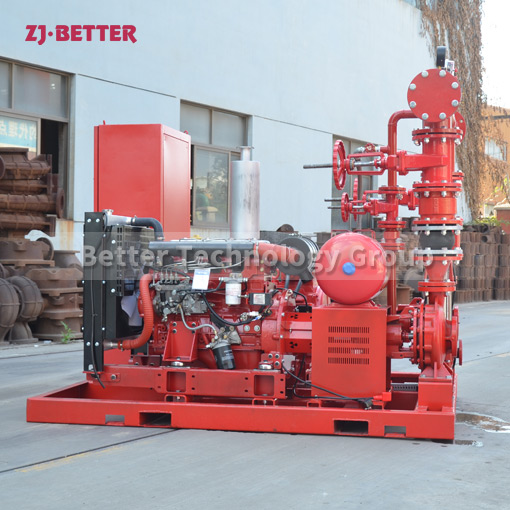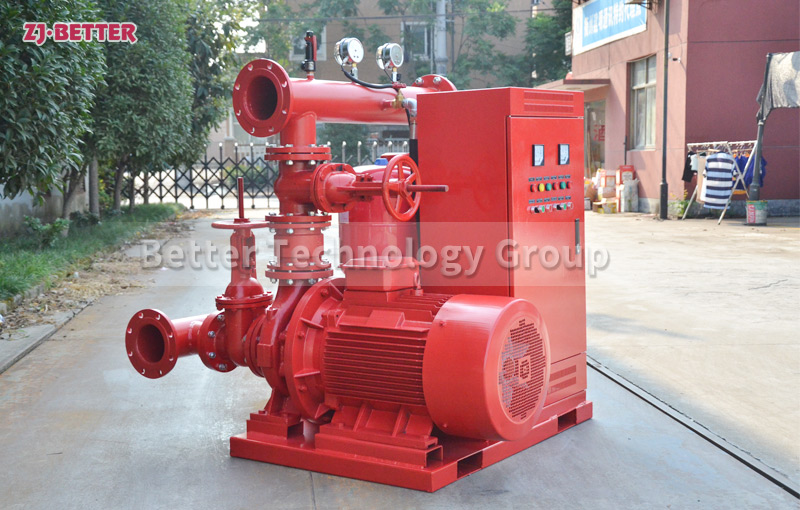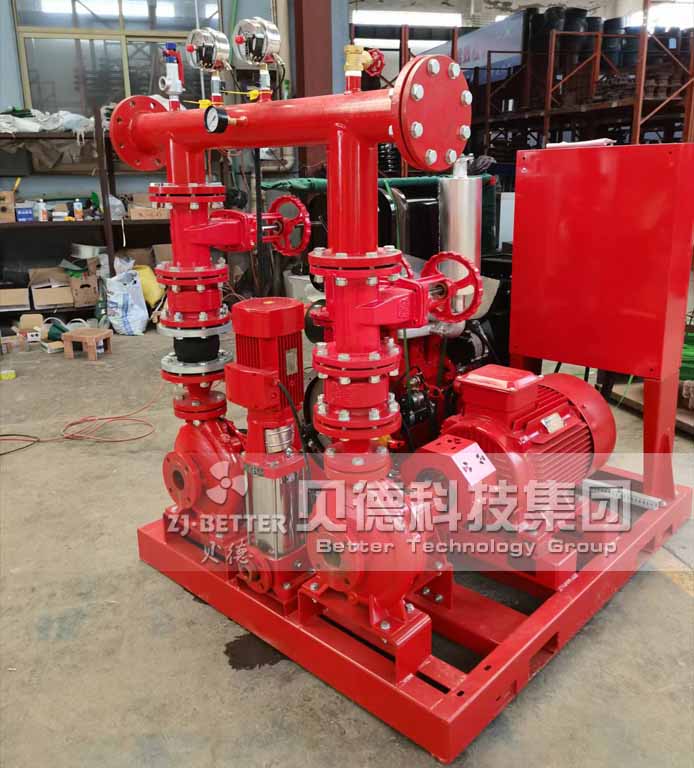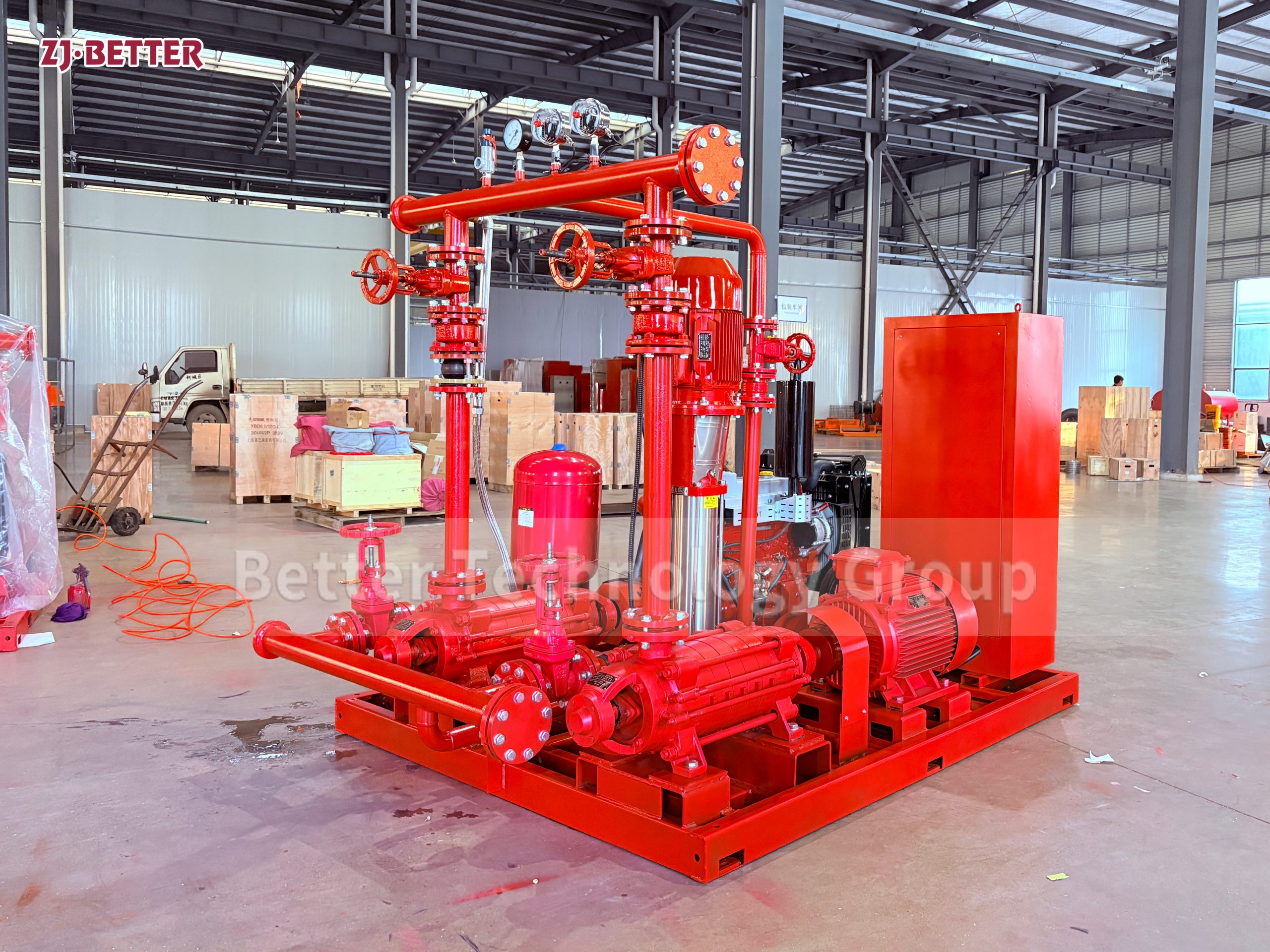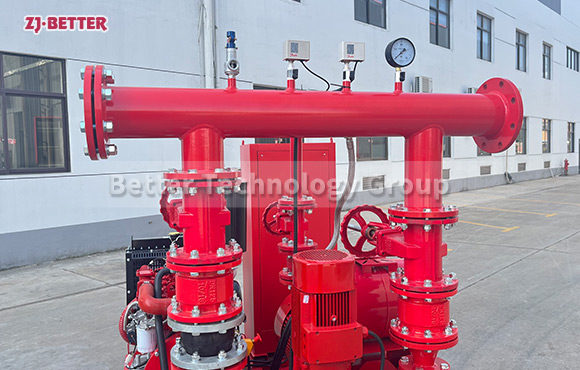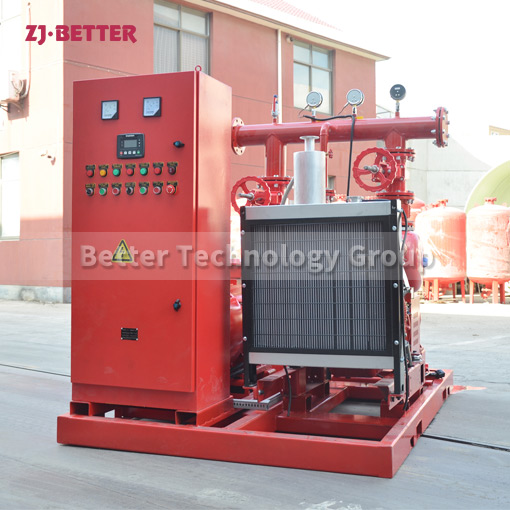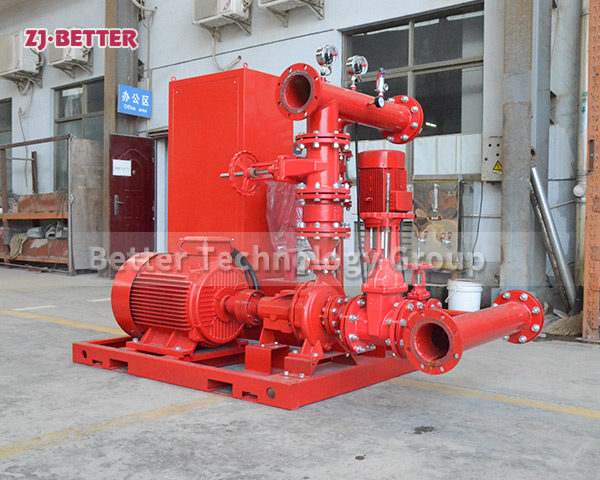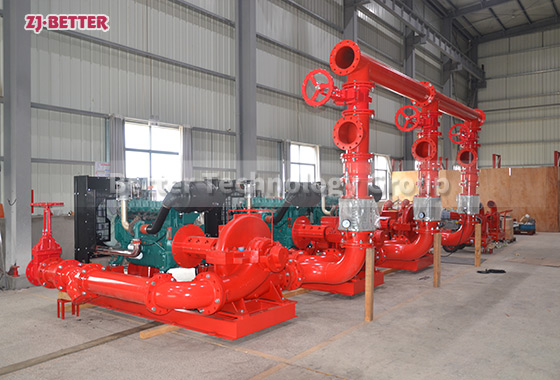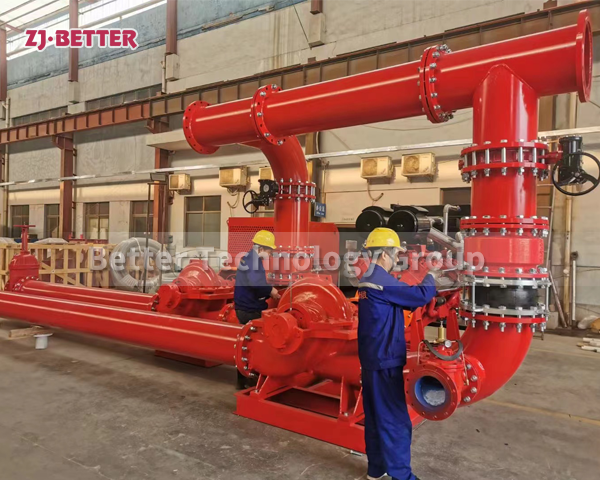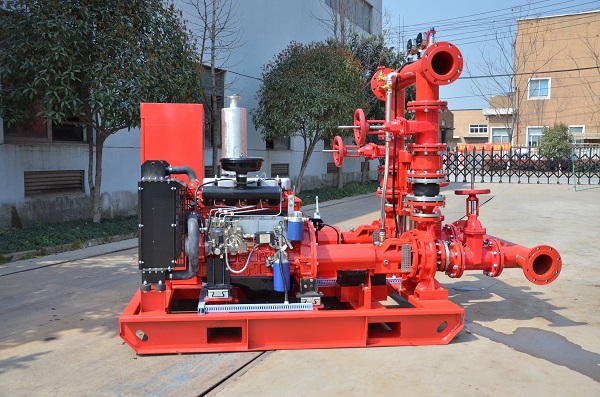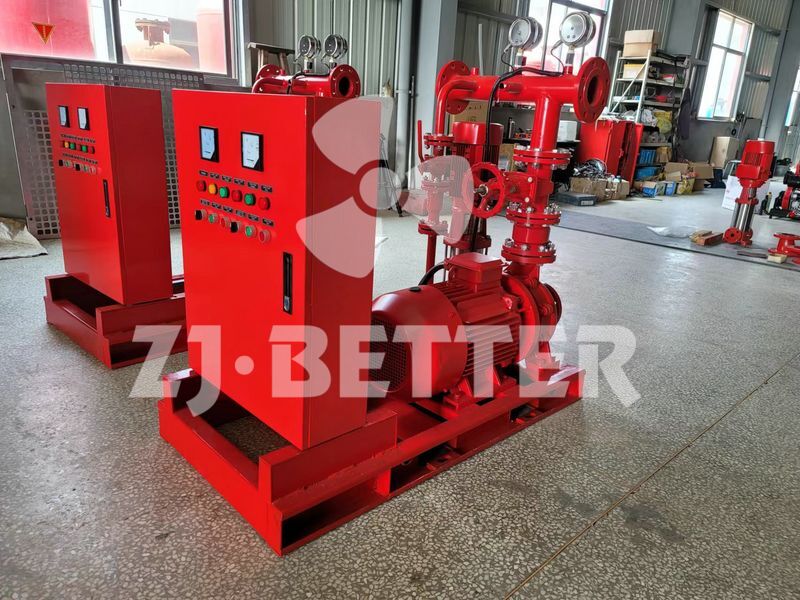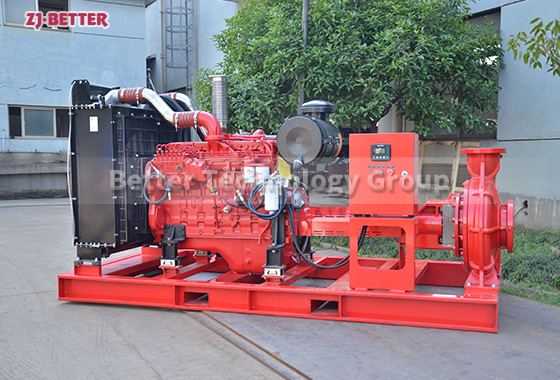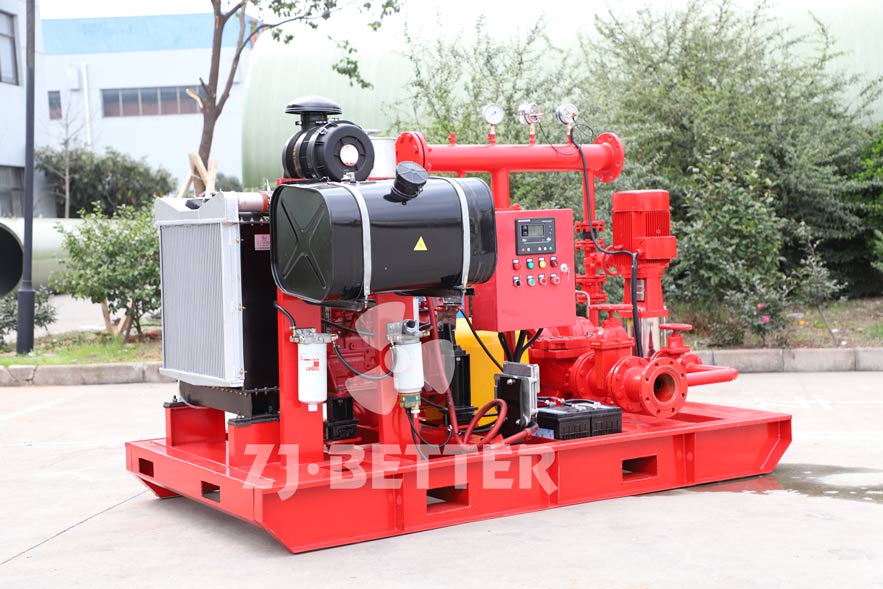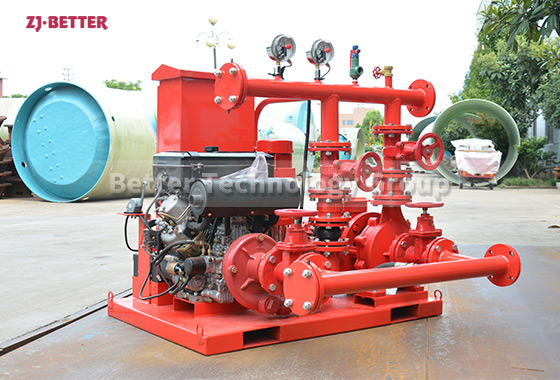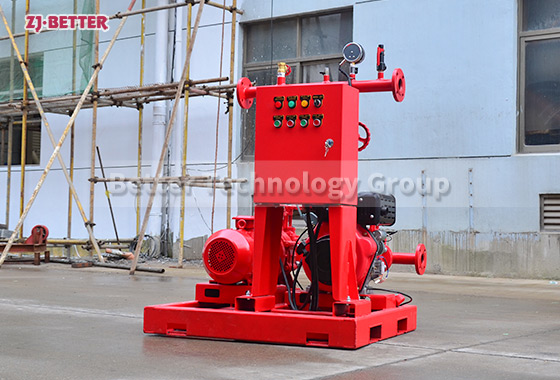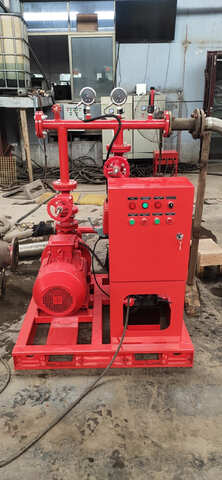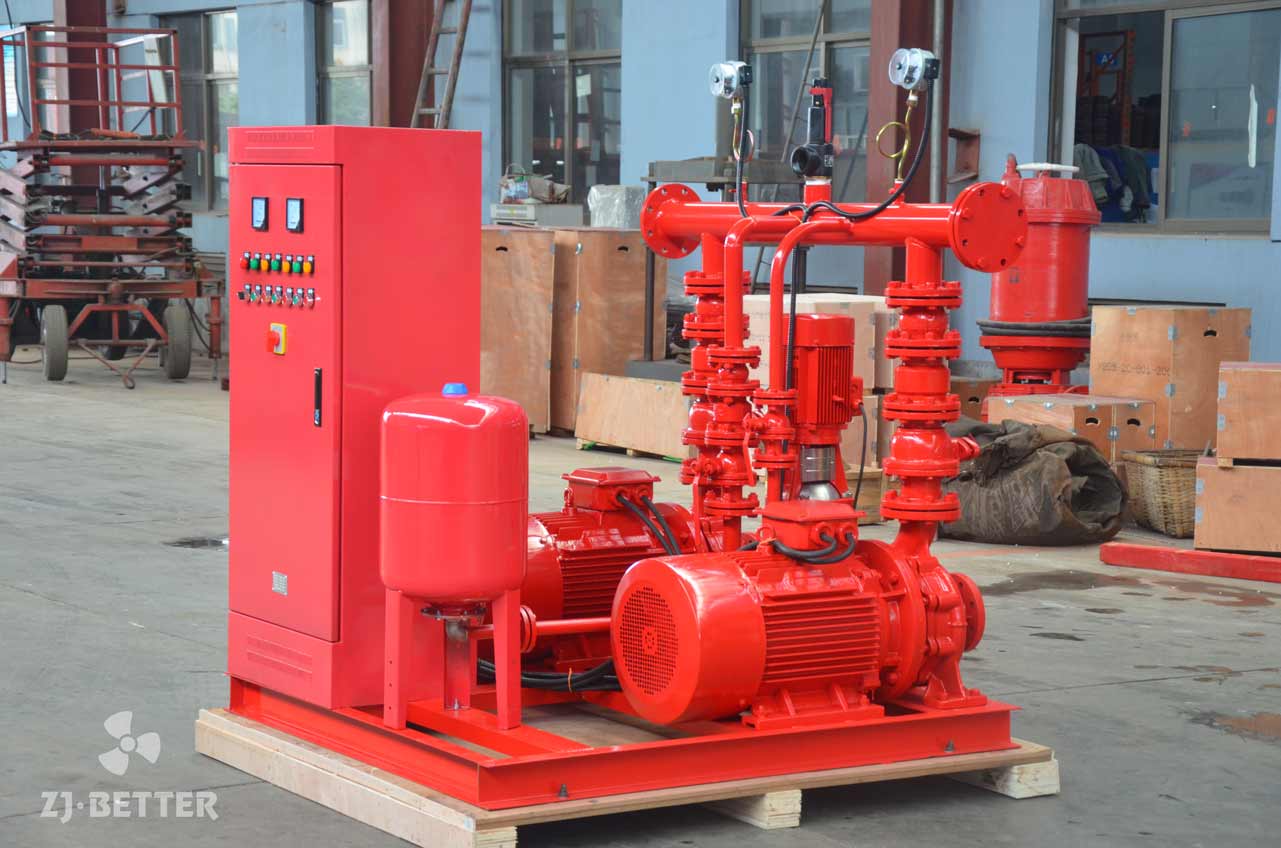Standard ISW Fire Pump Set
The fire pump set is not installed with water inlet pipe according to customer requirements. The fire pump adopts ISW pump, which has the advantages of convenient installation and simple maintenance.The pump set consists of electric pump, diesel engine pump and jockey pump.The three pumps automatically start and stop, and they can run even if the power is cut off, without being affected by the mains.
1. Electric pump, can use single stage pump, horizontal split case pump, end suction pump, multistage pump, material can be cast iron, stainless steel, and bronze impeller .
2. Diesel engine pump, with capacity and head equal to electric pump, with fuel tank, water tank,fan, control box.Diesel engine pump also can use end suction ,split case ,multistage pump can according to the flowrate,head . Different Diesel Model use different tank capacity.
3. Jockey pump, horizontal or vertical, capacity will be small, but head should be higher than electric and diesel engine pump.
Jockey material casing :cast iron ,shaft and impeller SS304.
4. Control panel: Auto Control of electric pump, diesel engine pump and Jockey Pump with overload, over current protection.
The control system has current, voltage, power display, and the operating status display of fire pump, diesel pump and steady pressure pump, diesel engine voltage, oil pressure, speed, running time display, manual pump control and automatic remote controlop.
5. Accessories: check valve, gate valve, pressure vessel, generally 0.6mpa, 1.0mpa, 1.6mpa, Pressure Gauge, Pressure Sensor, Common Pipe for Suction and Discharge, Flexible Joints and Flanges, Common Base plant.
Earthquake-resistant electrical contact pressure gauges are equipped with buffer valves at the pressure gauges and interfaces to reduce pressure fluctuations caused by false alarm signals of the pump.
Flexible Joints the material is rubber, shock absorption, noise reduction, the vibration is relatively large when the pump is started, if it is a rigid connection, it is easy to pull off, and the rubber joint can absorb the vibration generated by the pump or valve, which is convenient for pipeline connection.

